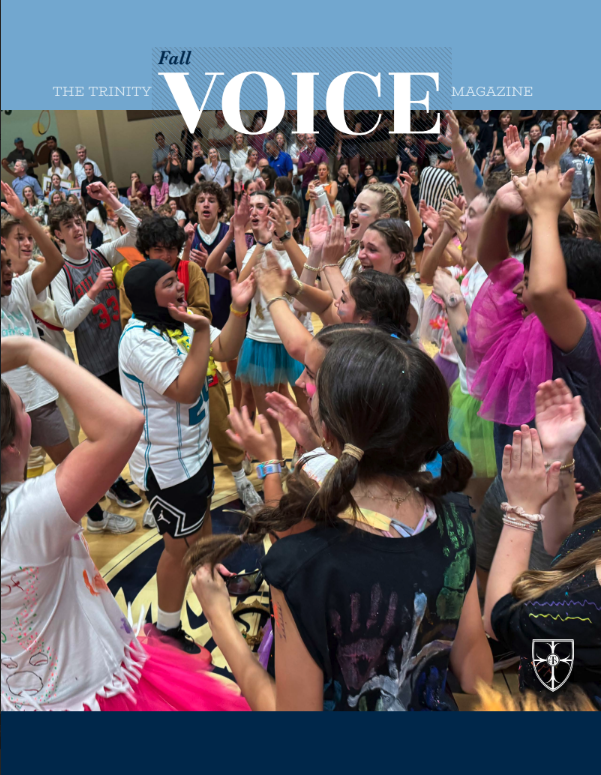Teacher Endowment Named for Retired Trinity Educator
In honor of retired Trinity teacher Cary Dufresne, an endowment has been established to support Trinity's teacher retention initiatives.
The endowment was the result of an anonymous donor's generosity and commitment to ensuring Trinity recruits and retains excellent educators.
“It is a meaningful investment that honors the incredible impact of one teacher while inspiring the next generation of outstanding faculty who will follow in her footsteps,” said Chief Advancement Officer Katie Keels.
Mrs. Dufresne dedicated 14 years of service to Trinity, retiring in June 2025 as a 2nd Grade teacher. She is also the parent of two Trinity alumni: Louise TES ‘05 and Mason TES ’09.
Keels said the endowment donor shared that Mrs. Dufresne made an impact on their family and wanted to honor her with a gift that would impact other Trinity educators.
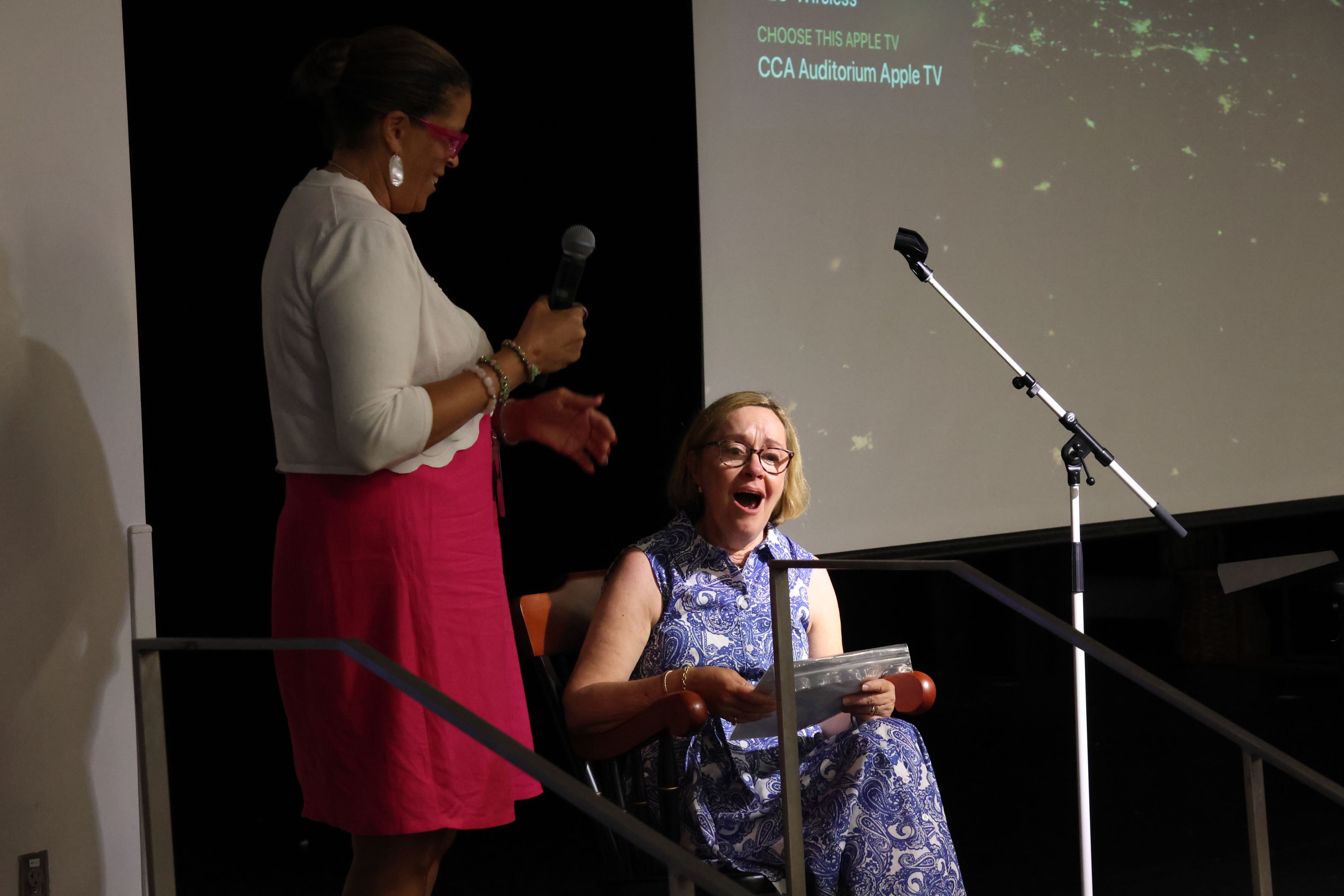
Teacher retention is one of the priorities of the True North capital campaign, which will grow Trinity's existing endowment and provide the financial framework to increase teacher salaries at Trinity. To learn more about True North, click here.
Transit Vote Gives 8th Grade Glimpse at Election Process
Sarah Jane Jarmosevich’s first decision as a voter was an easy one.
As Charlotte voters went to polling places across the city, Sarah Jane and her Middle School classmates lined up at ballot boxes in the Dickson Upper Commons to decide the election for best Halloween candy. The “candy-dates” were Kit Kat and Nerds Gummy Clusters.
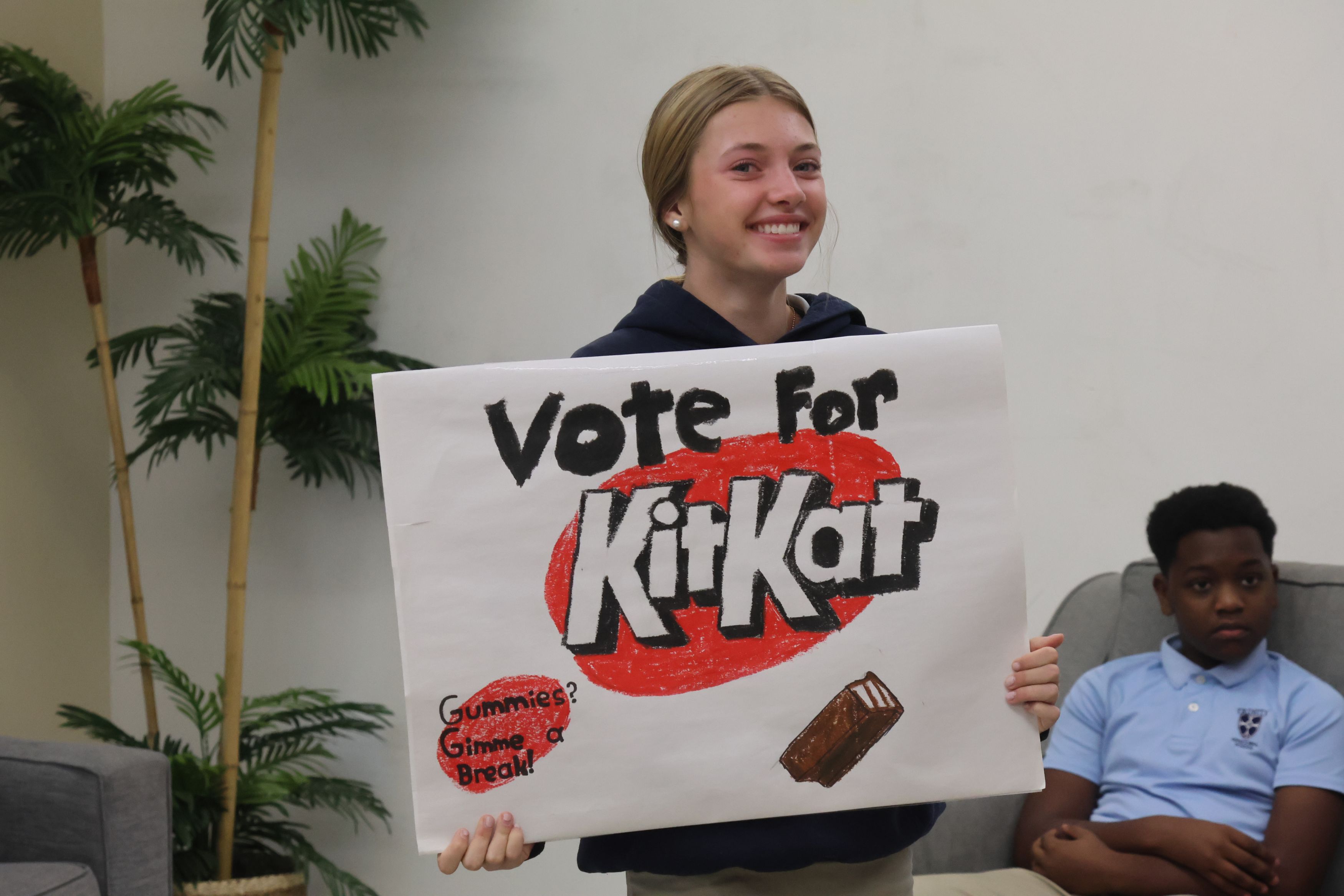
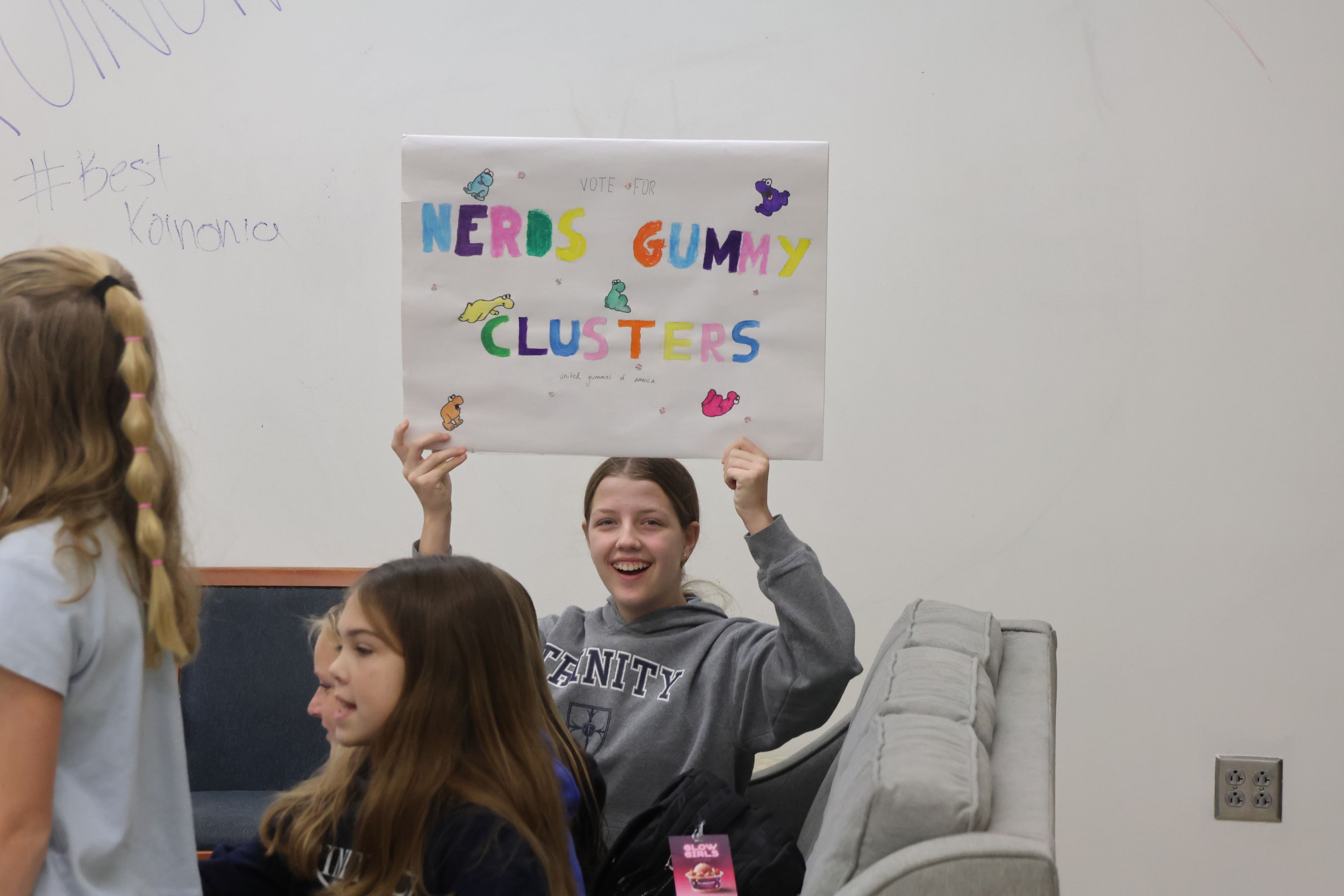
The balloting had all the trappings of an Election Day. Students had to vote at their assigned precincts and make sure they were registered correctly. They left their precincts with “I Voted” stickers. When the polls closed, Sarah and her fellow 8th Grade students counted the votes and phoned in the results to other classrooms. The winner was decided by an Electoral College rather than a popular vote.
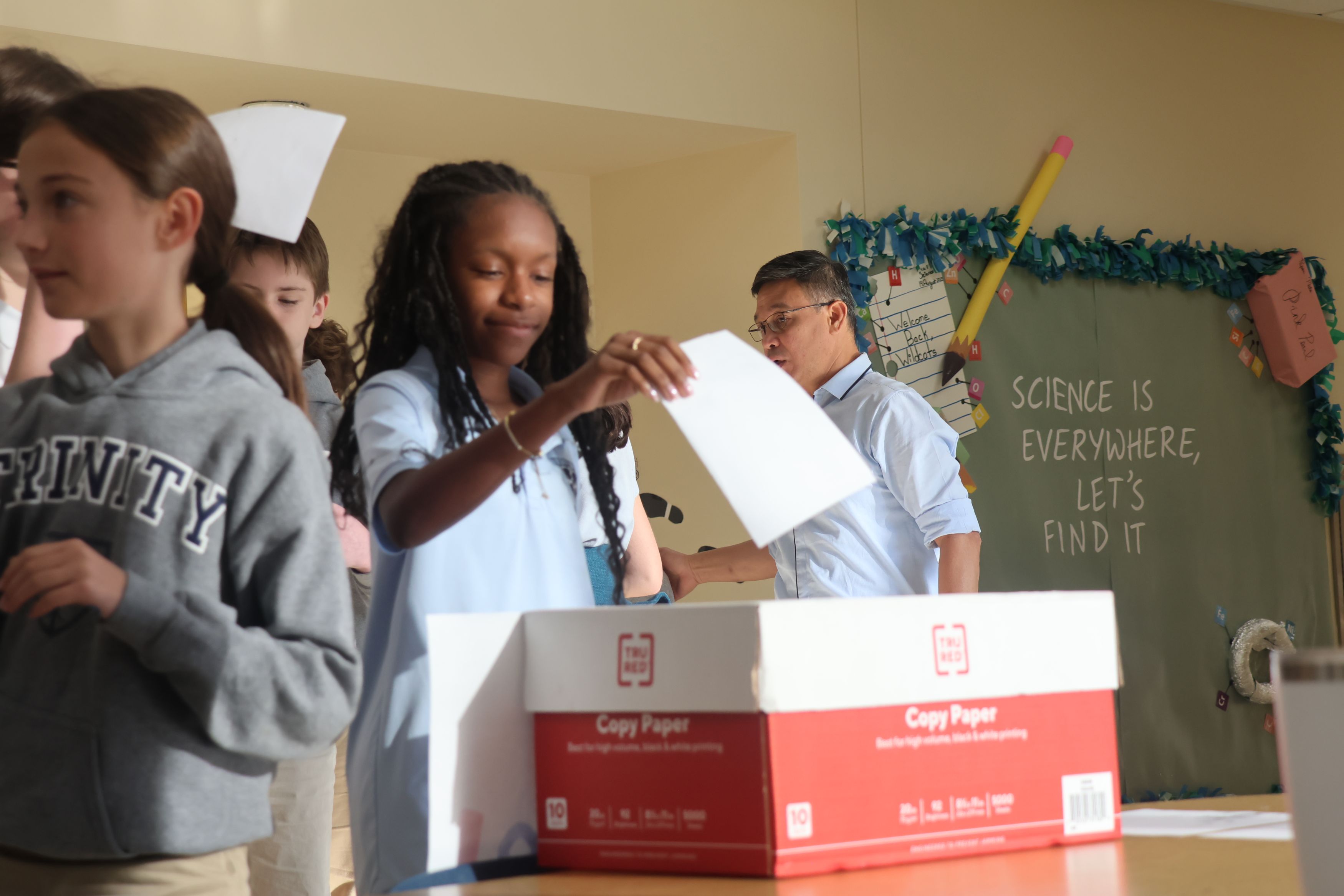
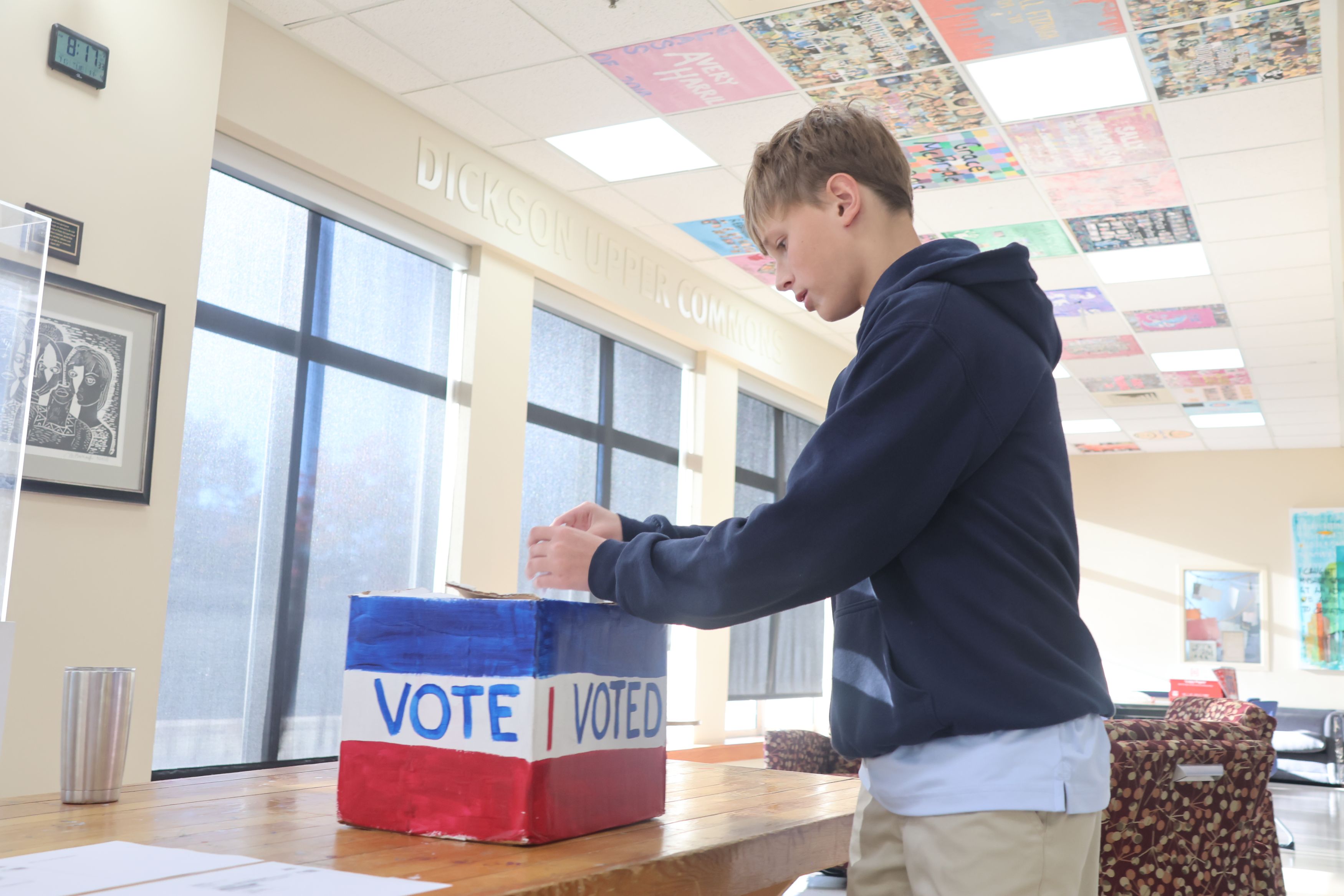
Sarah Jane’s vote? “Kit Kat — obviously,” she said. (Kit Kat won an Electoral College landslide.)
The next question on Sarah Jane’s ballot was a little more complicated to decide: Should Mecklenburg County raise its sales tax to fund an expansion of transit and transportation projects?

While the entire Middle School voted in the candy election, 8th Grade had a specific ballot that included the proposed tax increase, a topic the grade had been studying in its Social Issues Seminar class. Their mock referendum was a simulation of the real voting taking place that day as Mecklenburg residents also elected local leaders in municipal races.
In the weeks leading up to Election Day, the Seminar class studied the transit measure, explored the pros and cons of a tax increase to fund the projects, and assigned students to interview an adult about the referendum.
The transit vote was “one that affects their day-to-day lives as students who ride to school with their grownups every day,” said Stephanie Griffin, Assistant Head of School for Academics and one of the Seminar teachers.
At the end of their studies, students wrote persuasive letters to voters, urging them to either approve or reject the tax increase. Their campaigning was another component of the election unit as students learned about the formation of political parties and how parties appeal to voters' values through electioneering.
Like many adults who followed the transit debate, Sarah wrestled with how she would vote. She was initially a “no” vote, but studying it more closely “showed how much it would help my future and my friends’ futures.”
When the ballots were counted, 8th Grade approved the referendum by a more than 2:1 margin — a larger victory for the pro-transit side than the actual election results.
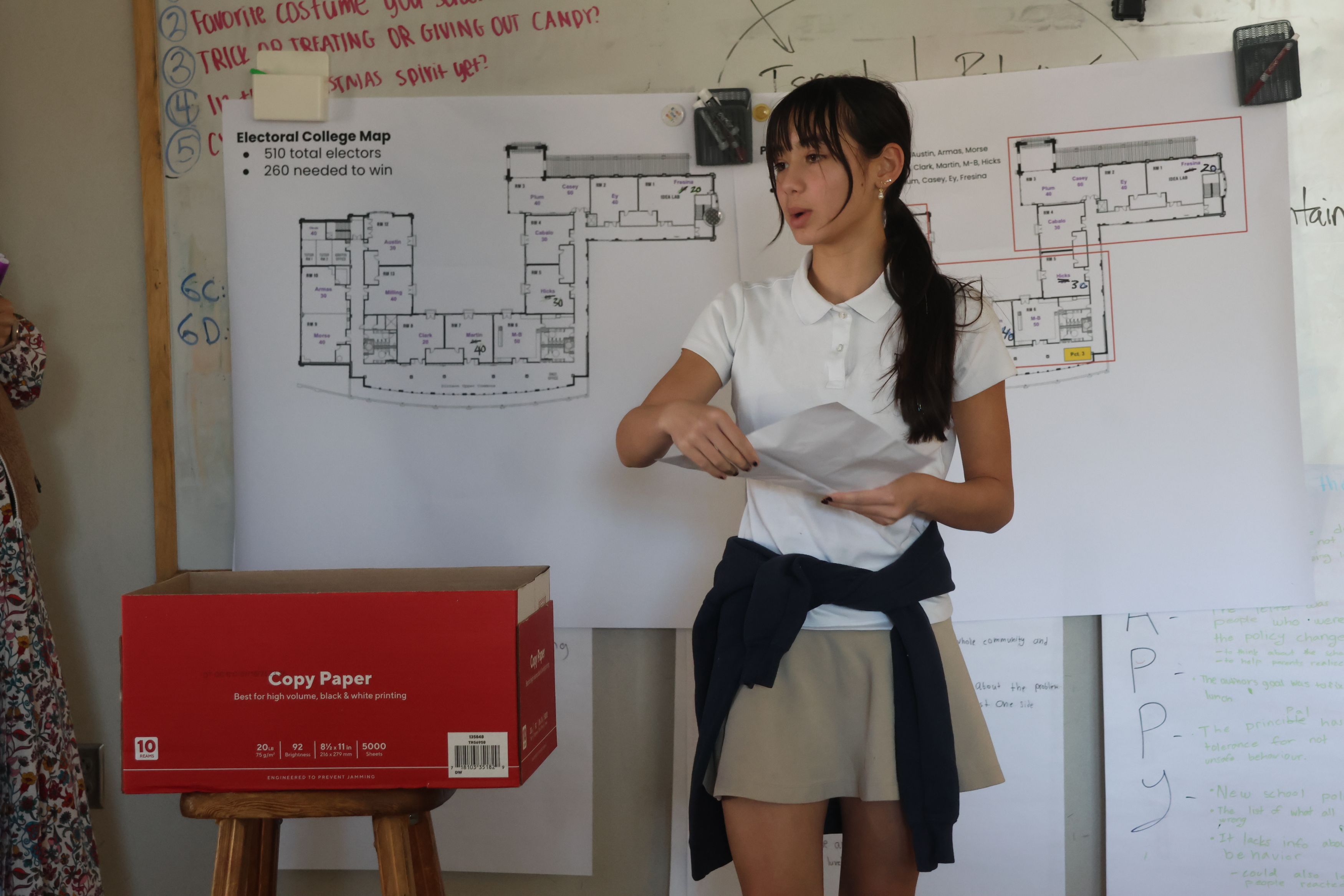
Griffin said the goal of the mock election – and of the Seminar course — is for 8th Grade students to leave Trinity with “the skills and habits and understandings they need to engage socially and civically.”
Trinity Wins Charlotte's Best Award
Trinity Episcopal School was voted one of Charlotte's best private schools in the Charlotte Observer's “Charlotte's Best” awards for 2025.
Trinity received the silver award in the private school category – an appropriate award given the silver anniversary Trinity celebrated in the 2024-25 school year.
"This recognition shines a light on our staculty and the community that rallied behind them,” said Head of School Imana Sherrill. “Thank you to everyone who voted and who is a champion for Trinity day in and day out. This is your win, too!”
The results of the 2025 voting were announced on Sunday, Oct. 26. To read more, click here.
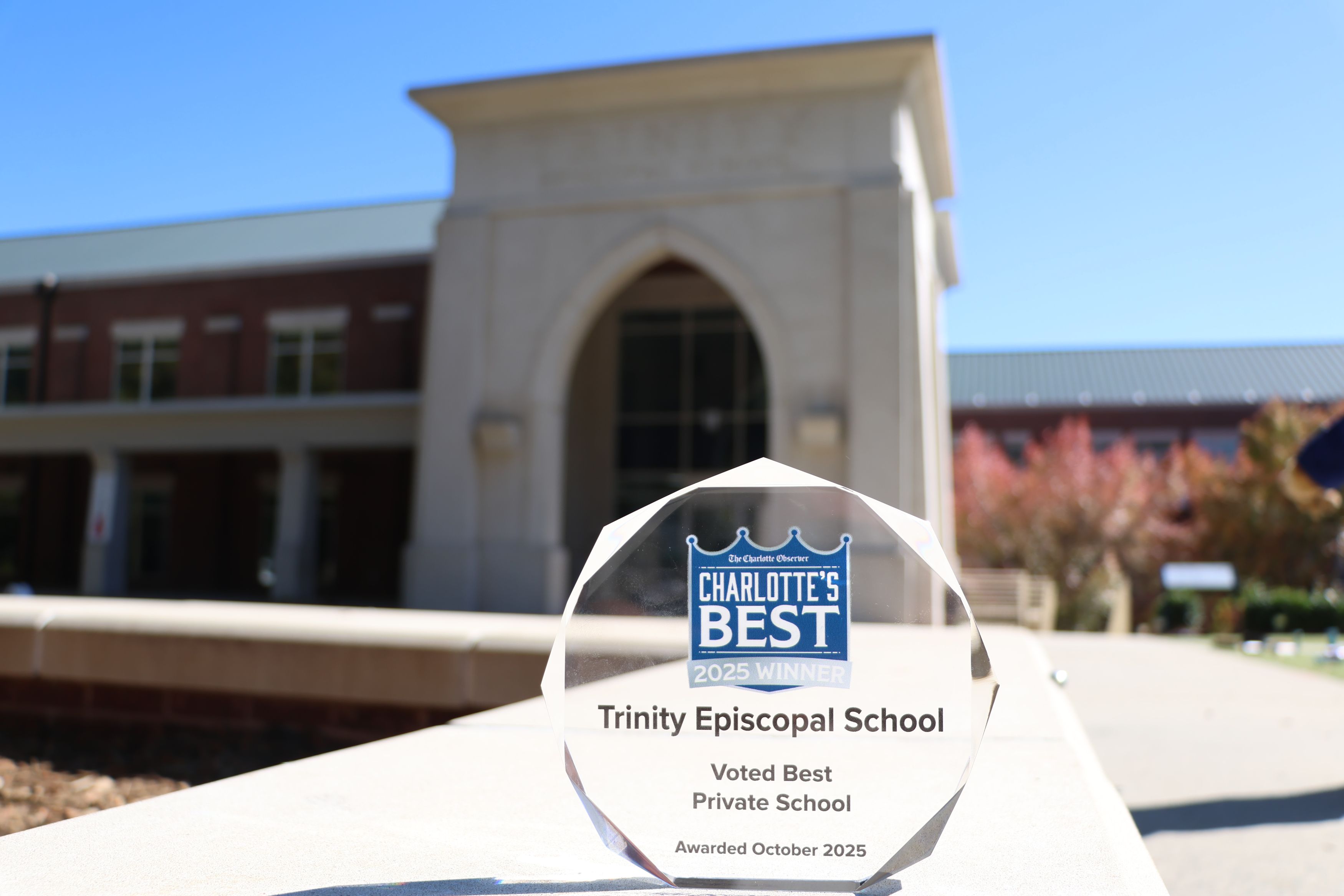
Trinity Unveils the "True North" Campaign
Trinity Episcopal School is charting a course for its future with the launch of its new capital campaign — True North: Scholarship, Spirituality, Diversity, and Trinity Episcopal’s Next 25 Years.
True North, Trinity’s fourth capital campaign, was launched Friday, Sept. 19, in a celebration marking 25 years since the school’s ribbon-cutting.
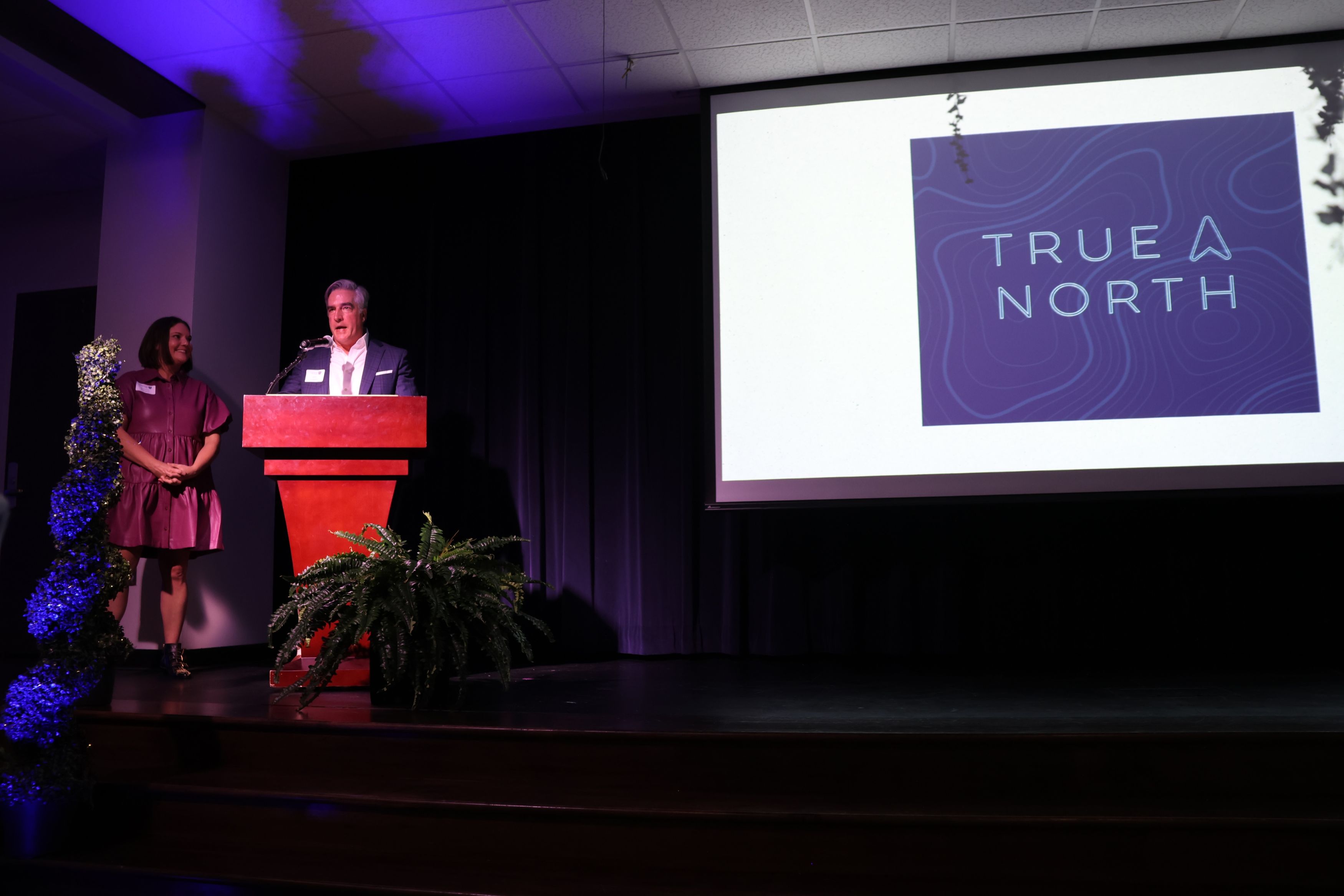
“It’s our turn to ensure that the values that shaped the first 25 years continue to guide the next 25 years,” said John Laughlin, co-chair of the campaign along with Sommers Errington.
The priorities of the True North campaign are:
- Increased compensation for faculty and staff, and strengthening Trinity’s financial support program, both of which will be accomplished through an enhanced endowment
- Capital projects that will bring new technologies and capabilities to classrooms and other learning spaces around the campus
The launch of True North’s public phase was the culmination of nearly 2 years of work by the campaign steering committee.
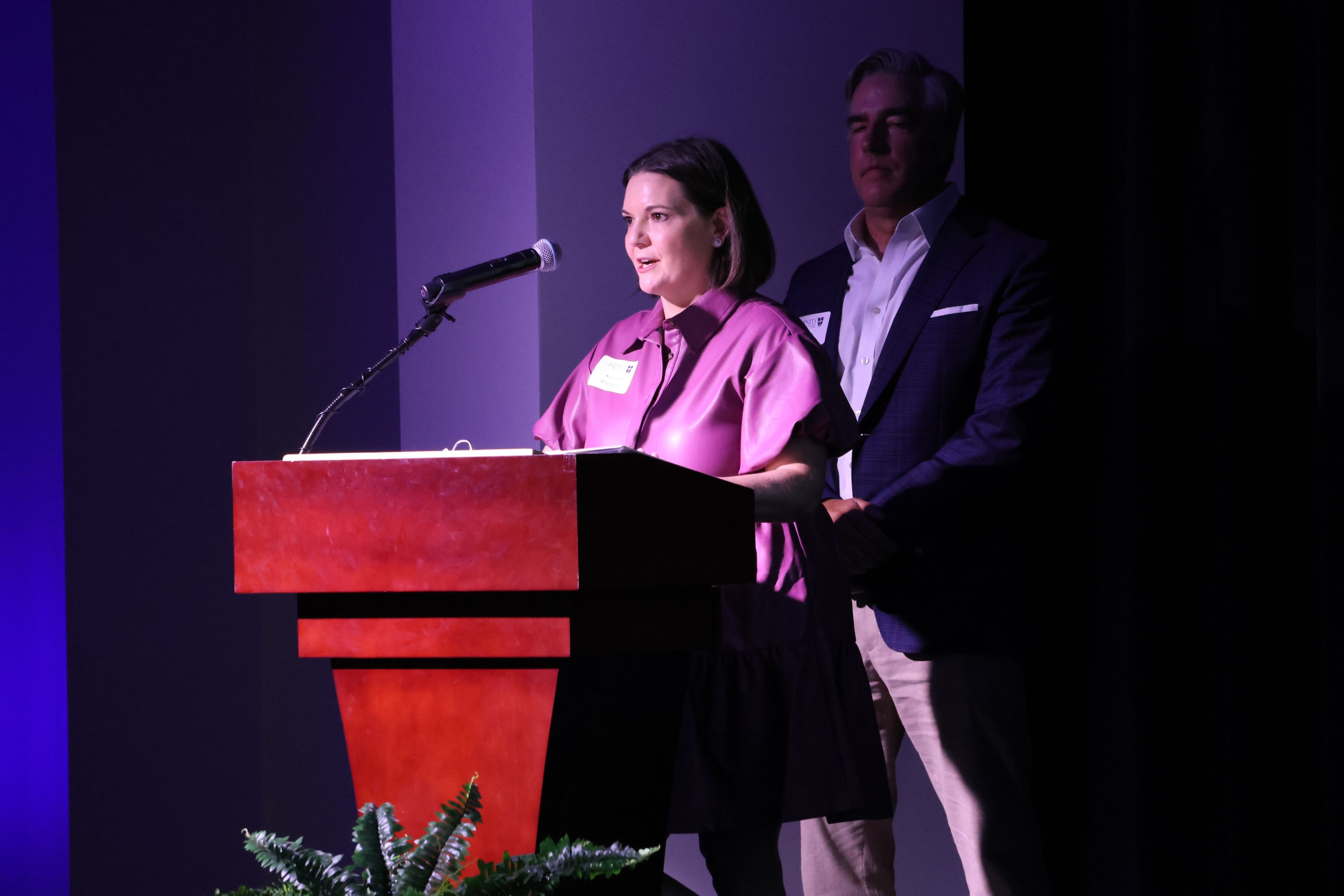
“When we canvassed current and former parents and the community at large, everybody was very focused on maintaining and preserving what makes Trinity wonderful,” said Errington.
To achieve True North’s goals, the campaign will seek to raise $5 million.
Head of School Imana Sherrill announced at the launch celebration that $4.1 million had already been pledged toward True North.
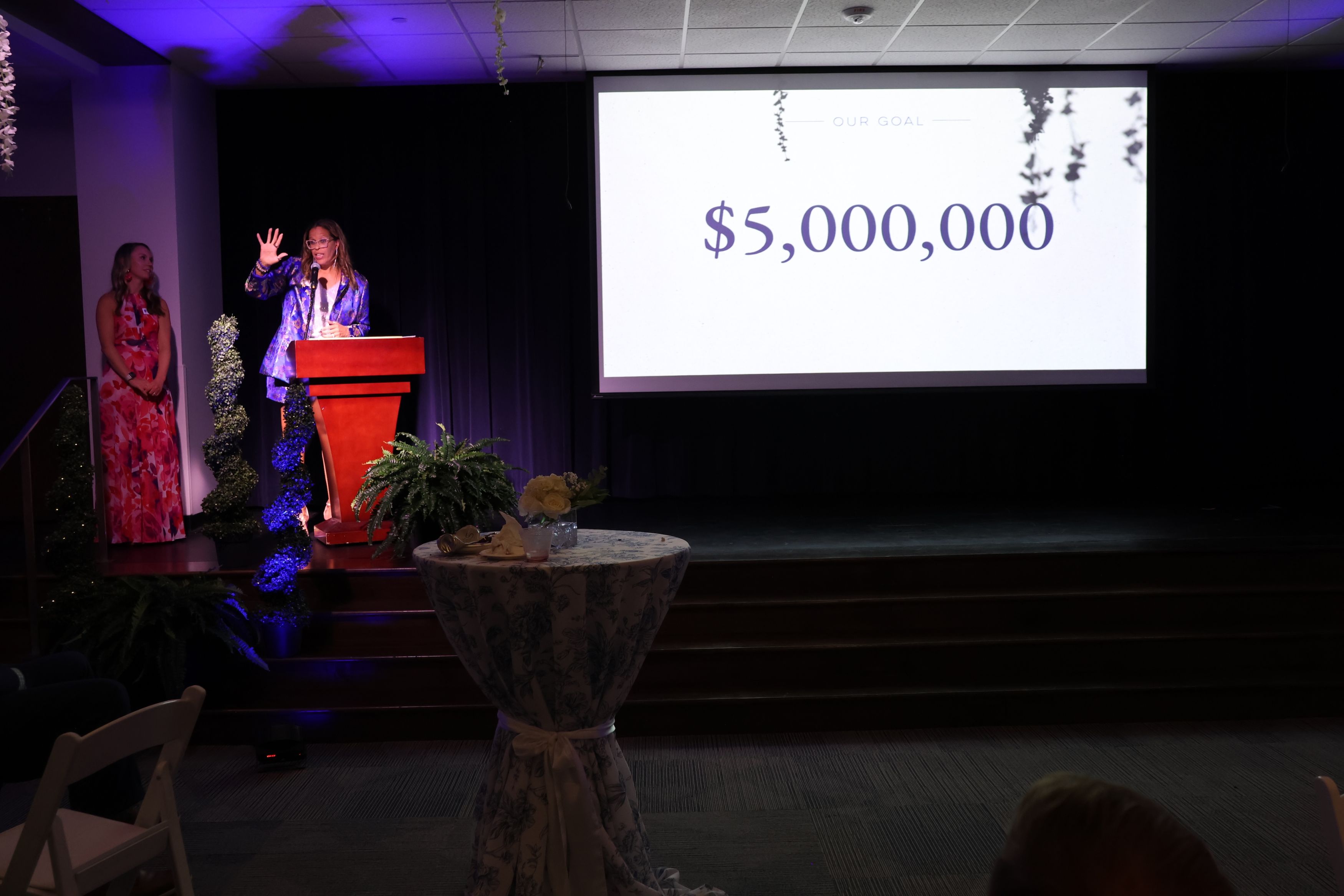
Among the guests who helped mark this new chapter for Trinity was the founding Head of School, the Rev. Louis “Smokey” Oats, who led Trinity until his retirement in June 2011. “Father Smokey” reflected on the many pivotal moments that shaped Trinity in its early years, including the down-to-the-wire opening of the school as it scrambled to secure occupancy permits from Mecklenburg County, and the many founding families and employees who set Trinity into motion.
”My hope and prayer is that we - each of you who are now players in the life of this school today - will continue to honor the founders through our commitment to excellence and service and the Trinity Way,” Oats said.
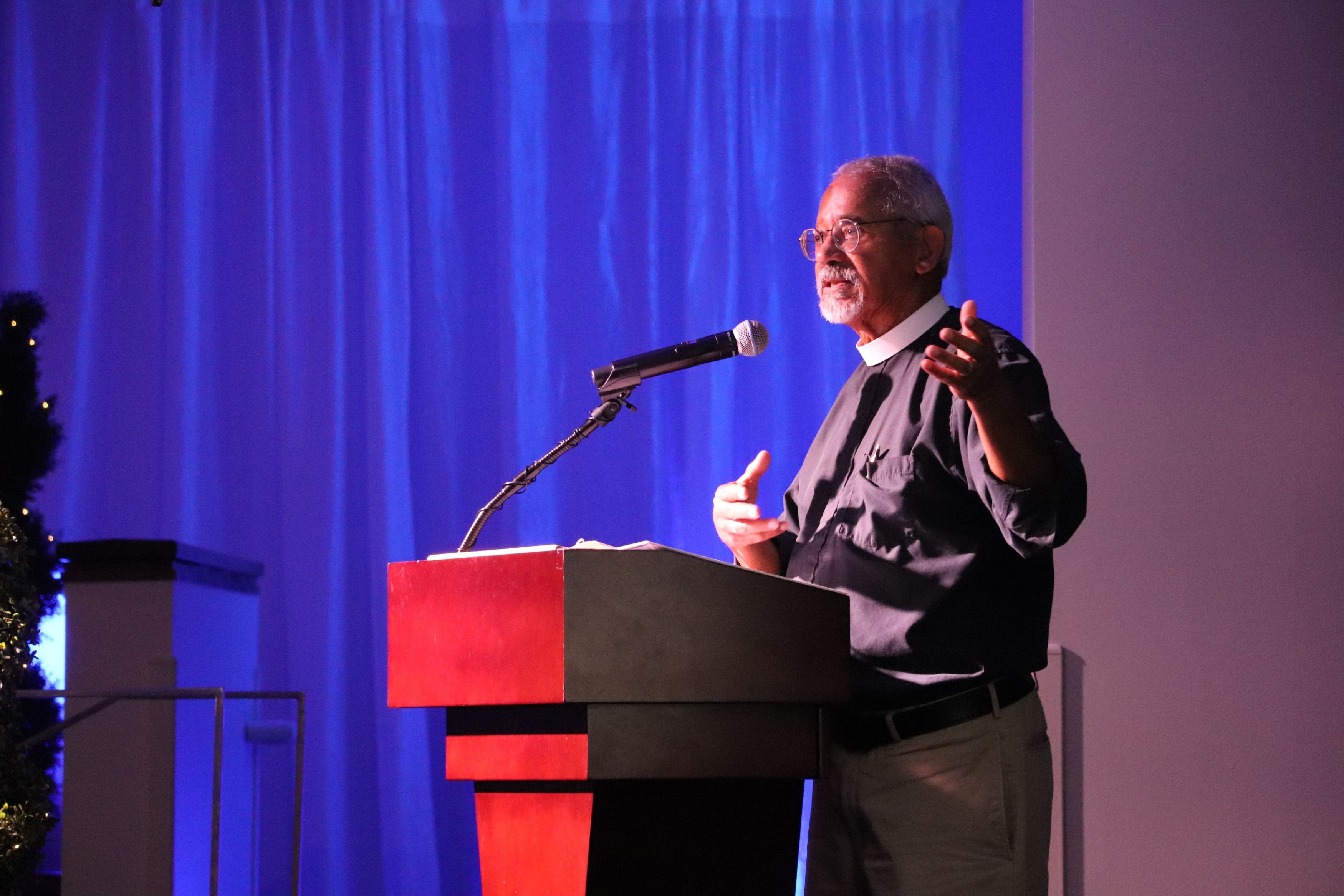
Chief Advancement Officer Katie Keels applauded the campaign's “remarkable start.”
“Together, we can close this final gap and carry Trinity into its next 25 years,” Keels said. “The path forward for Trinity points in one direction: True North.”
Learn more about True North by clicking here. To hear more from the campaign co-chairs and others, take a moment to watch the following video.
Charting a Path for Teaching AI at Trinity
Collaborative learning isn't just for Trinity students — it's also the approach faculty and staff are taking to craft a Trinity-specific policy for artificial intelligence.
"It's not only about how to use AI, but how to prepare students for a world that is unknown to all of us right now," said Assistant Head of School for Academics Stephanie Griffin, who led an all-Trinity faculty and staff workshop on AI.

While there is some discomfort in education circles about AI, Griffin said it was important to "engag(e) in that discomfort" to shape how AI can be instructed.
Griffin's AI workshop took place during an afternoon of professional development that included training in MagicSchool AI. It was the first of a series of planned AI workshops that will take place this school year while an AI task force of faculty and staff members develops guidelines to teaching and learning AI that are aligned with Trinity's mission.
Trinity's time-honored educational philosophy has positioned the school to meet the moment, Griffin said. “The academic excellence that's at our core has given students the learning skills they can transfer into being adept at emerging technologies and having that human connection and commitment to community.”
Just as Trinity's collaborative workshop classroom setting gives students space to build their own knowledge and explore new paths to solve problems, Griffin said they also need space to be uncomfortable with not knowing an answer. "It's a resiliency skill," she said.
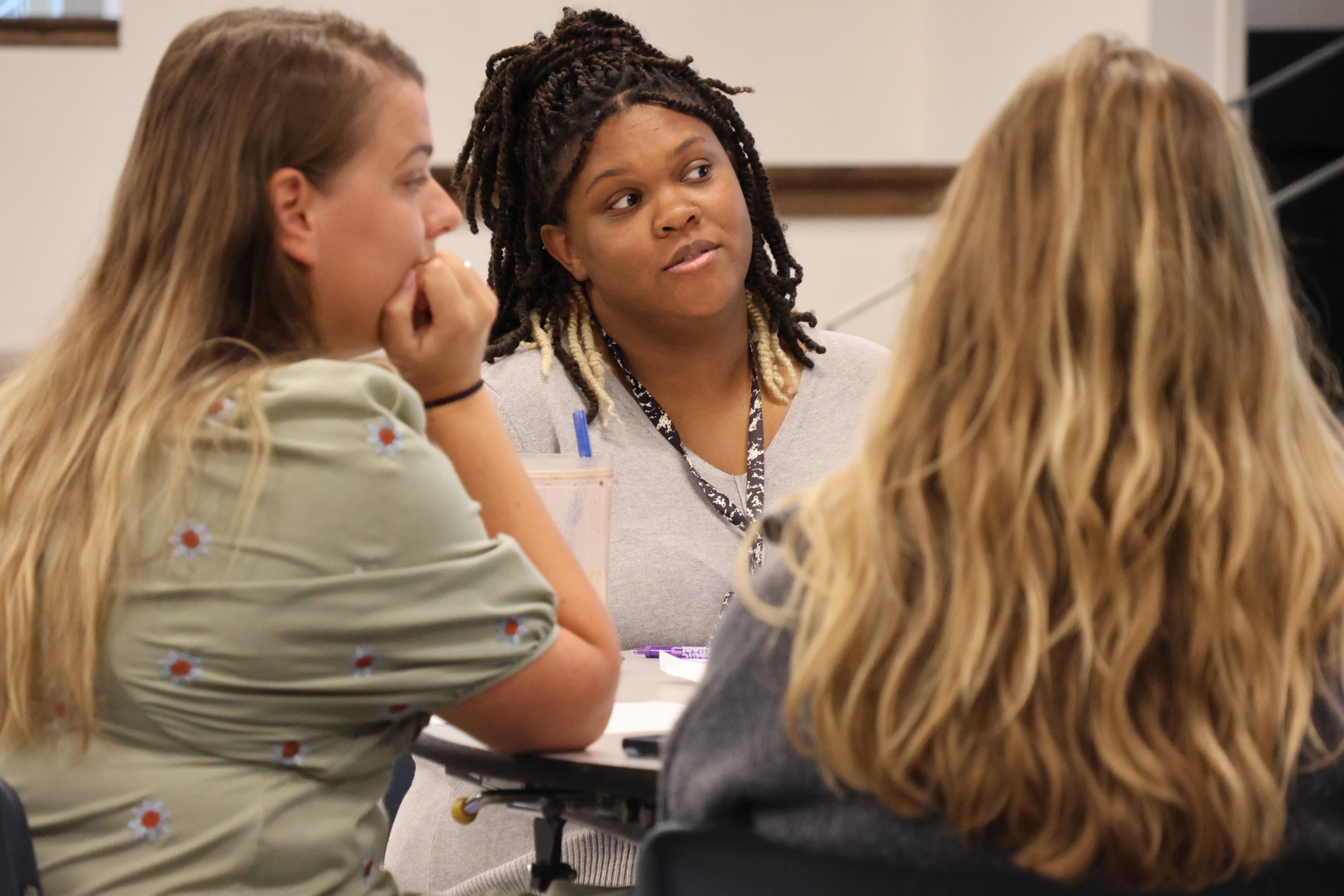
In breakout conversations at tables, faculty and staff identified opportunities and challenges ahead as the school crafts its approach to AI. They saw as opportunities:
- Build on Trinity's commitment to humanity
- Measure students' growth and learning beyond traditional academics
- Empower strong-minded humans with flexibility and the ability to think critically
- Sharpen students' communication, leadership dexterity, and independence to grow their discerning minds
- Summon the courage to explore and try, relying on one another to learn together
Challenges that were identified for AI included:
- Difficulty in understanding what is real and what is fake
- AI's focus on the result without real inquiry
- Whose voices are included and excluded in the construction and generation of the large-language model?
- How to handle the enormous access to AI
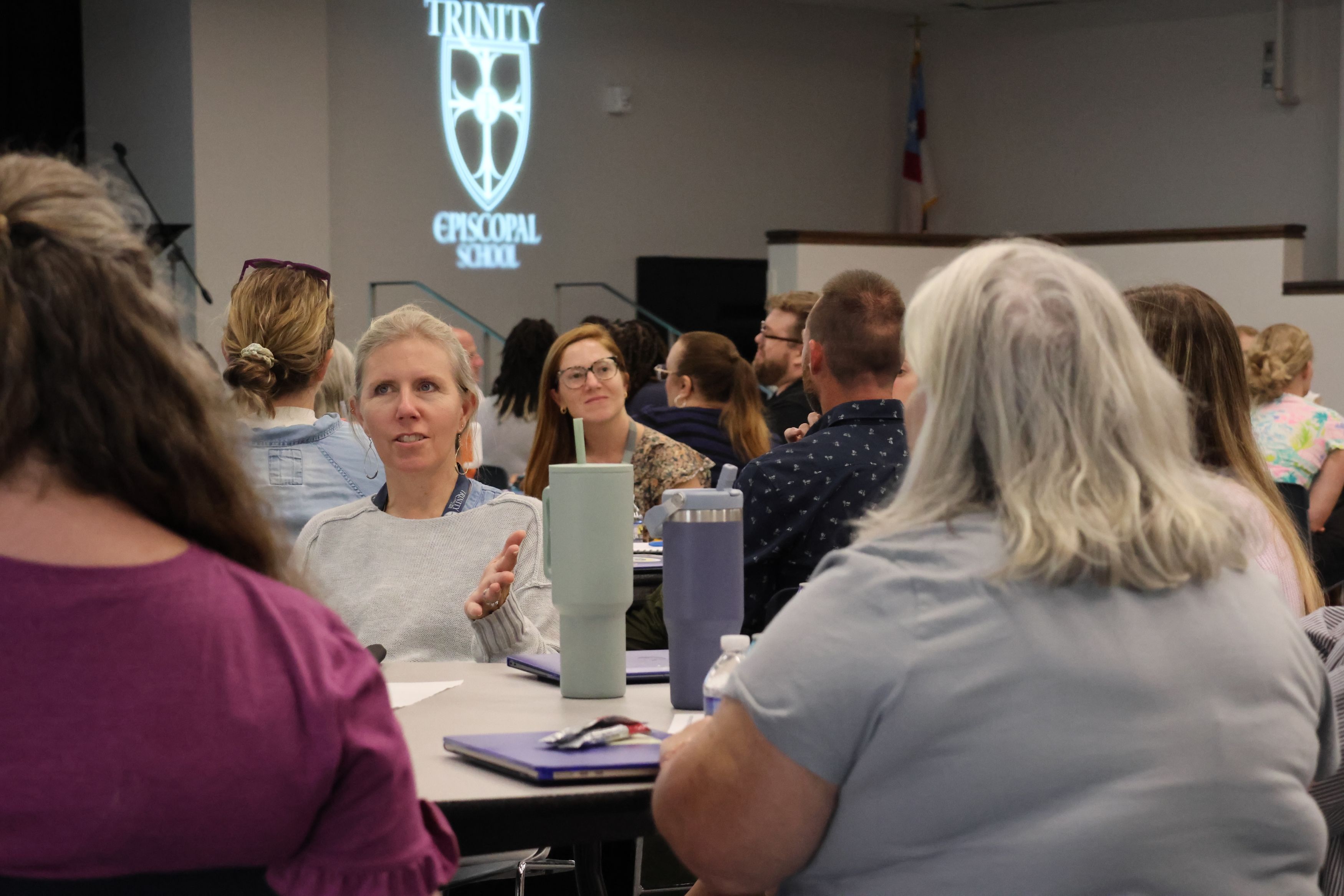
While those are big unknowns — with more unknowns emerging — Griffin said the school's mission and philosophy will guide the way.
"We don't quite know where we're going, but we can walk together," she said.

